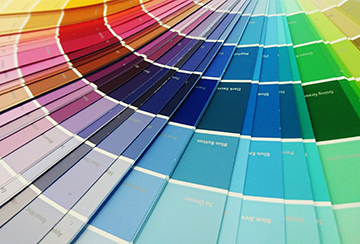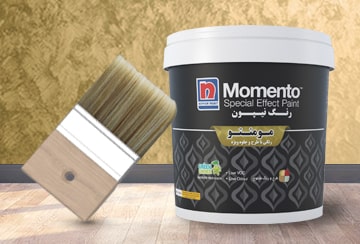Problem & Solution
Lorem ipsum dolor sit amet Lorem ipsum dolor sit amet
 The reasons for the problem:
The reasons for the problem:
- Surface preparation was not appropriate.
- The appropriate sealer was not applied under the topcoat.
- The surface underneath is loose and does not have the required adhesion or water moisture and permeates through the back of the wall.
 Solution:
Solution:
- In the Interior problems, use the flat edge of paint scraper to scrape off any flaky and cracked paint from the wall.
- If the level of peeling surfaces is deep, it can be repaired using the same material as chalk or cement.
- Apply a layer of primer then spray with suitable acrylic putty.
- Apply a layer of undercoat.
- Apply one or two layers of topcoat.
 The reasons for the problem:
The reasons for the problem:
- The time interval of using sealer or primer was long.
- Use of poor quality paint.
- Applying the paint solution too thin.
- The surface is not dry.
 Solution:
Solution:
- In the case of external facade using strong water pressure, cleaning the surface and in case of interior faced all of the surfaces should be removed by abrasion.
- Letthe surface dry completely.
- Apply a suitable primer.
- Apply two coats of topcoat.
 The reasons for the problem:
The reasons for the problem:
- The proper painting system or surface preparation was not used.
- Use of poor quality paint.
 Solutions:
Solutions:
- Clean and remove fading parts.
- Apply the primer onto the wall with a paint roller until the wall is completely primed. Allow the primer to dry completely.
- Repaint with the correct Painting system.
 The reasons for the problem:
The reasons for the problem:
- Efflorescence is caused by moisture ingress. As the moisture enters and moves through the wall, it dissolves mineral salts present in the cement.
- Applying the second coat of paint when the first is not dried.
- Painting on a loose surface.
 Solution:
Solution:
- Clean the surface by using water pressure.
- Cover the cracks of the wall thoroughly.
- Let the surface to be completely dry.
- Apply one coat of sealer.
- Apply two coats of topcoat.
 The reasons for the problem:
The reasons for the problem:
 Solution:
Solution:
- Make sure the painted surface is completely dry.
- Use the flat edge of paint scraper to scrape the previous paint and make a smooth and even surface.
- Clean the surface.
- Apply one or two coats of paint with the correct painting system. In order to prevent problems such as syringe use Nippon special thinner (code 550).
 The reasons for the problem:
The reasons for the problem:
- The dirt and contamination on the surface.
- Part of the surface that is always in the shade and is not exposed to the sun.
- Use of poor quality paint.
 Solutions:
Solutions:
- Clean the surface by using water pressure.
- Apply one coat of anti – algae and Antifungal solution.
- Let the surface to be completely dry.
- Apply a single coat of sealer or primer.
- Apply two coats of topcoat.
 The reasons for the problem:
The reasons for the problem:
- Surface preparation was not appropriate.
- The appropriate sealer was not applied under the topcoat.
- The surface underneath is loose and does not have the required adhesion or water moisture and permeates through the back of the wall.
 Solution:
Solution:
- In the Interior problems, use the flat edge of paint scraper to scrape off any flaky and cracked paint from the wall.
- If the level of peeling surfaces is deep, it can be repaired using the same material as chalk or cement.
- Apply a layer of primer then spray with suitable acrylic putty.
- Apply a layer of undercoat.
- Apply one or two layers of topcoat.
 The reasons for the problem:
The reasons for the problem:
- The time interval of using sealer or primer was long.
- Use of poor quality paint.
- Applying the paint solution too thin.
- The surface is not dry.
 Solution:
Solution:
- In the case of external facade using strong water pressure, cleaning the surface and in case of interior faced all of the surfaces should be removed by abrasion.
- Letthe surface dry completely.
- Apply a suitable primer.
- Apply two coats of topcoat.
 The reasons for the problem:
The reasons for the problem:
- The proper painting system or surface preparation was not used.
- Use of poor quality paint.
 Solutions:
Solutions:
- Clean and remove fading parts.
- Apply the primer onto the wall with a paint roller until the wall is completely primed. Allow the primer to dry completely.
- Repaint with the correct Painting system.
 The reasons for the problem:
The reasons for the problem:
- Efflorescence is caused by moisture ingress. As the moisture enters and moves through the wall, it dissolves mineral salts present in the cement.
- Applying the second coat of paint when the first is not dried.
- Painting on a loose surface.
 Solution:
Solution:
- Clean the surface by using water pressure.
- Cover the cracks of the wall thoroughly.
- Let the surface to be completely dry.
- Apply one coat of sealer.
- Apply two coats of topcoat.
 The reasons for the problem:
The reasons for the problem:
 Solution:
Solution:
- Make sure the painted surface is completely dry.
- Use the flat edge of paint scraper to scrape the previous paint and make a smooth and even surface.
- Clean the surface.
- Apply one or two coats of paint with the correct painting system. In order to prevent problems such as syringe use Nippon special thinner (code 550).
 The reasons for the problem:
The reasons for the problem:
- The dirt and contamination on the surface.
- Part of the surface that is always in the shade and is not exposed to the sun.
- Use of poor quality paint.
 Solutions:
Solutions:
- Clean the surface by using water pressure.
- Apply one coat of anti – algae and Antifungal solution.
- Let the surface to be completely dry.
- Apply a single coat of sealer or primer.
- Apply two coats of topcoat.
Nippon Paint
Explore the essentials of painting with our wide range of solutions.

Our colour collection
Discover a wider range of possibilities with our assortment of colours.

